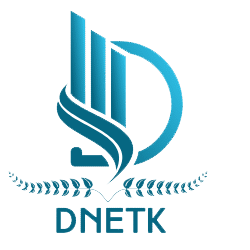In today’s rapidly evolving digital world, the phrase “Tooling IT” has become a buzzword in industries that rely heavily on technology. But what exactly does it mean? At its core, “Tooling IT” refers to the practice of creating, implementing, and managing specialized tools, platforms, and frameworks that enhance the efficiency, productivity, and overall performance of Information Technology (IT) systems. Whether it’s software development, infrastructure management, cybersecurity, or business automation, the right tooling plays a critical role in streamlining processes and enabling innovation.
This article explores the concept of Tooling IT, why it matters, its applications, challenges, and future trends.
Understanding Tooling IT
In IT, “tools” are not just physical devices but software, frameworks, and platforms designed to solve specific problems. Tooling IT involves strategically selecting and integrating these tools into the IT ecosystem to:
- Automate repetitive tasks
- Improve collaboration
- Enhance software quality
- Optimize infrastructure
- Strengthen security
For instance, developers rely on version control systems like GitHub, IT operations teams use monitoring tools like Nagios or Datadog, and businesses adopt workflow automation platforms like Zapier or Microsoft Power Automate. Each of these represents a part of the broader landscape of Tooling IT.
Why Tooling IT Matters
Without proper tools, IT operations can become slow, error-prone, and inefficient. Tooling IT ensures organizations can:
- Increase Productivity – Automating repetitive tasks allows IT professionals to focus on strategic initiatives.
- Enhance Collaboration – Tools like Jira, Slack, and Trello help teams communicate better and track projects effectively.
- Improve Software Quality – Testing frameworks and CI/CD pipelines ensure fewer bugs and smoother releases.
- Boost Security – Security tools such as firewalls, endpoint protection, and vulnerability scanners reduce cyber risks.
- Reduce Costs – Automation and optimization minimize the need for manual labor and prevent costly downtime.
In essence, Tooling IT is not just about using tools—it’s about creating an ecosystem where technology drives efficiency and innovation.
Applications of Tooling IT
Tooling IT spans across multiple domains, each with unique requirements. Below are some of its key applications:
1. Software Development
- Code Repositories: Git, GitLab, Bitbucket
- Continuous Integration/Continuous Deployment (CI/CD): Jenkins, CircleCI, GitHub Actions
- Testing Tools: Selenium, JUnit, Postman
These tools ensure faster delivery, better code quality, and smoother deployment.
2. Infrastructure and Operations
- Monitoring Tools: Datadog, Nagios, Prometheus
- Configuration Management: Ansible, Puppet, Chef
- Cloud Platforms: AWS, Azure, Google Cloud
They help IT teams maintain uptime, optimize performance, and ensure scalability.
3. Cybersecurity
- Endpoint Protection: CrowdStrike, Symantec
- Vulnerability Scanners: Nessus, OpenVAS
- SIEM (Security Information and Event Management): Splunk, IBM QRadar
Security tools safeguard systems from increasing cyber threats.
4. Business Automation
- Workflow Automation: Zapier, Power Automate, IFTTT
- Collaboration Tools: Slack, Microsoft Teams, Asana
- Analytics Platforms: Tableau, Power BI
These tools ensure organizations make data-driven decisions while improving collaboration and efficiency.
5. Artificial Intelligence & Machine Learning
- AI Frameworks: TensorFlow, PyTorch, Scikit-learn
- Automation: Robotic Process Automation (RPA) tools like UiPath and Automation Anywhere
- Data Tools: Apache Spark, Hadoop
AI-powered tooling enables smarter decision-making and predictive insights.
Benefits of Tooling IT
When properly implemented, Tooling IT offers numerous advantages:
- Standardization – Ensures uniform processes across teams.
- Scalability – Tools help businesses grow without adding excessive complexity.
- Faster Problem Resolution – Monitoring and analytics tools detect and resolve issues quickly.
- Innovation Enablement – Reduces time spent on repetitive tasks, allowing teams to focus on innovation.
- Employee Satisfaction – User-friendly tools reduce frustration and empower teams.
Challenges in Tooling IT
Despite its advantages, Tooling IT also comes with challenges:
- Tool Overload – Organizations often adopt too many tools, leading to complexity and inefficiency.
- Integration Issues – Not all tools work seamlessly together, which can create silos.
- Costs – Licensing, training, and maintenance expenses can add up quickly.
- Security Risks – Poorly managed tools may introduce vulnerabilities.
- Learning Curve – Employees may struggle to adapt to new tools, slowing adoption.
The key is balance—choosing the right tools for the right purpose and integrating them effectively.
Best Practices for Effective Tooling IT
To make the most of Tooling IT, organizations should:
- Assess Needs First – Avoid unnecessary tools; choose only those that align with business goals.
- Prioritize Integration – Select tools that integrate well into existing systems.
- Focus on Security – Ensure tools comply with cybersecurity standards.
- Provide Training – Equip teams with proper training to maximize tool adoption.
- Review Regularly – Continuously evaluate whether tools remain relevant and effective.
Future of Tooling IT
The future of Tooling IT is closely tied to emerging technologies:
- AI-Driven Tools – Expect smarter tools that automatically detect and fix issues.
- Low-Code/No-Code Platforms – Empowering non-technical staff to build apps and workflows.
- Cloud-Native Tools – Increasing adoption of tools designed specifically for cloud environments.
- Unified Tooling Ecosystems – More platforms offering all-in-one solutions to reduce tool sprawl.
- Enhanced Cybersecurity Tooling – AI and automation will drive next-gen security platforms.
As IT continues to evolve, Tooling IT will remain a cornerstone of efficiency and innovation.
Conclusion
Tooling IT is more than just using software—it’s about crafting a structured ecosystem of tools that empower businesses to work smarter, faster, and more securely. From software development and infrastructure management to automation and AI, tools play an integral role in shaping the future of IT.
Organizations that strategically adopt and manage their tools can unlock unprecedented levels of productivity, innovation, and growth. At the same time, they must remain mindful of challenges like tool overload and integration hurdles. The future promises even smarter, AI-driven, and cloud-native solutions, making Tooling IT a vital component of digital transformation strategies worldwide.

